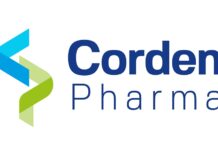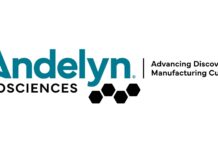Decision Resources, one of the world’s leading research and advisory firms for pharmaceutical and healthcare issues, finds that, through 2021 the uptake of three new market entrants, Roche/Genentech’s Perjeta (pertuzumab) and trastuzumab-DM1 (T-DM1), and Novartis’s Afinitor (everolimus) will drive growth in the breast cancer market. Having secured regulatory approval in both Europe and the United States for later-line hormone-receptor positive breast cancer in July, Decision Resources estimate that Afinitor’s major-market peak-year sales in this setting will exceed $1 billion. Furthermore, following the U.S. Food and Drug Administration’s approval of Perjeta in combination with trastuzumab and docetaxel (Sanofi’s Taxotere, generics) for first-line advanced HER2-positive breast cancer in June 2012, ongoing clinical development of the drug will enable it to secure blockbuster sales by 2021. T-DM1 has demonstrated impressive results in later-line treatment of HER2-positive breast cancer and Decision Resources anticipates the agent will be approved in this setting in 2013, and will move into earlier settings through 2021.
The Pharmacor Breast Cancer advisory service also finds that, in 2011, Roche/Genentech/Chugai’s Herceptin (trastuzumab) earned $3.4 billion across the major markets, making it the highest-selling breast cancer drug in the United States, France, Germany, Italy, Spain, the United Kingdom and Japan. However, during the ten-year forecast, the entry of biosimilar trastuzumab will erode sales of Herceptin.
The findings also reveal that major-market sales to treat breast cancer, which totaled $8.6 billion in 2011, will rise steadily to approximately $10.9 billion in 2018, before plateauing through 2021. Price erosion of key agents such as Herceptin will be offset by the uptake of novel premium-priced therapies as well as an increase in the diagnosed incident breast cancer population, as a result of population aging.
“Breast cancer drug development is a hive of activity but despite the busy pipeline, we forecast the uptake of just three novel agents in this market through 2021,” said Decision Resources Analyst Amy Duval, M.Res. “Two of these agents will penetrate only the HER2-positive market segment, which will continue to be dominated by Roche. Although HER2-positive disease accounts for less than 25 percent of breast cancer cases, in 2011 it earned 55 percent of the breast cancer market and this is set to rise further to 65 percent in 2021.”
The Pharmacor Patient Flow Model for Breast Cancer, which contains detailed methodology that includes the modeling of recurrent cases of breast cancer, finds that 62 percent of the first line drug-treatment opportunities per year for advanced disease – measured as the number of women per year that become eligible for first line drug-treatment for advanced disease – are the result of recurrent disease, rather than women first presenting with advanced disease. Due to the anticipated approval of novel agents that will improve outcomes for localized disease, Decision Resources forecasts that the number of women first presenting with advanced disease will grow at a faster rate than those with recurrent disease, thus reducing the proportion to 57 percent by 2021, and 54 percent by 2031.
In comparison with many other forms of cancer the prognosis for advanced breast cancer is good, with a mean life expectancy following development of advanced disease in 2011 (whether newly diagnosed or recurrent) projected to be over 3 years. If historical trends in survival continue, a further 6 months will be added to this figure in 2021, thus extending the duration of drug-treatable advanced disease by almost 20 percent over this ten-year period.
About Pharmacor
Decision Resources’ Pharmacor advisory service offers clients in the biopharmaceutical industry the most up-to-date information available on commercially significant disease topics.
About Pharmacor Patient Flow Models
By utilizing our proprietary Pharmacor epidemiological data, Decision Resources now provides Pharmacor Patient Flow Models covering bladder cancer, breast cancer, hepatocellular carcinoma, malignant melanoma, non-small-cell lung cancer, ovarian cancer, prostate cancer, renal cell carcinoma, sarcoma and thyroid cancer. Using Pharmacor Patient Flow Models, users can build their own oncology patient flow model and/or validate the logic behind their own internal models. This interactive tool allows users to track changing disease and population dynamics over a 20-year annualized forecast, improve their modeling accuracy with clearly depicted methods and transparent assumptions and identify untapped market potential within lines of therapy. Pharmacor Patient Flow Models is available as an add-on product to the Pharmacor advisory service.
About Decision Resources
Decision Resources (www.decisionresources.com) is a world leader in market research publications, advisory services and consulting designed to help clients shape strategy, allocate resources and master their chosen markets. Decision Resources is a Decision Resources Group company.
About Decision Resources Group
Decision Resources Group is a cohesive portfolio of companies that offers best-in-class, high-value information and insights on important sectors of the healthcare industry. Clients rely on this analysis and data to make informed decisions. Please visit Decision Resources Group at www.DecisionResourcesGroup.com.
All company, brand, or product names contained in this document may be trademarks or registered trademarks of their respective holders.
Due to the anticipated approval of novel agents that will improve outcomes for localized disease, Decision Resources forecasts that the number of women first presenting with advanced disease will grow at a faster rate than those with recurrent disease, thus reducing the proportion to 57 percent by 2021, and 54 percent by 2031.




















